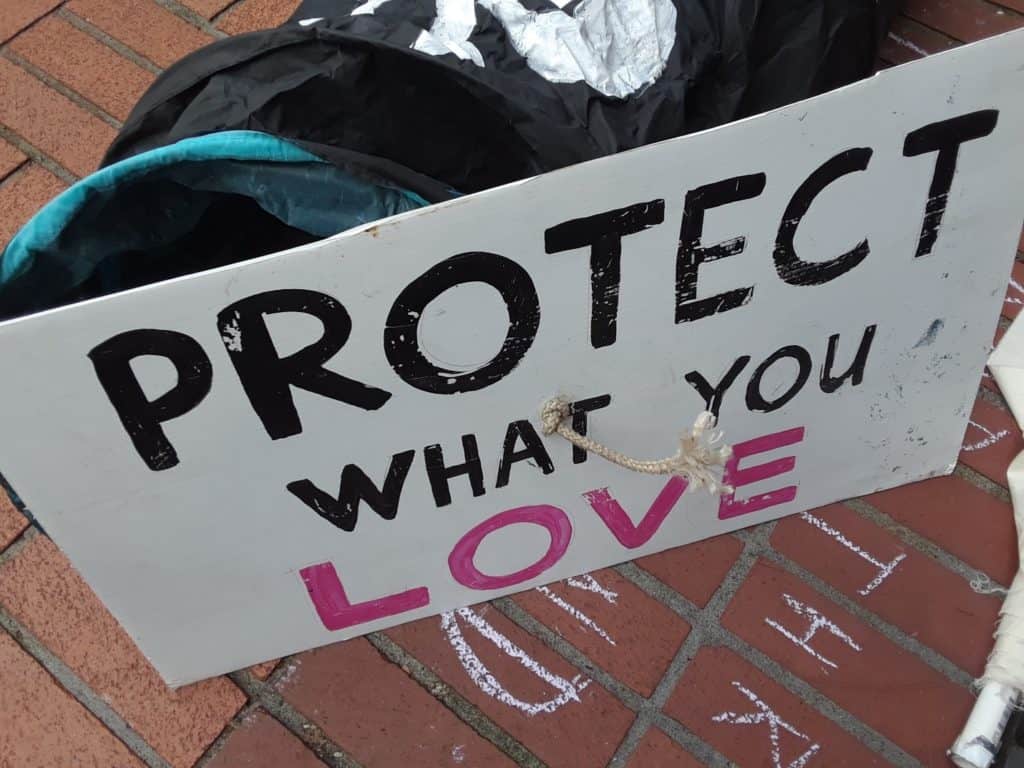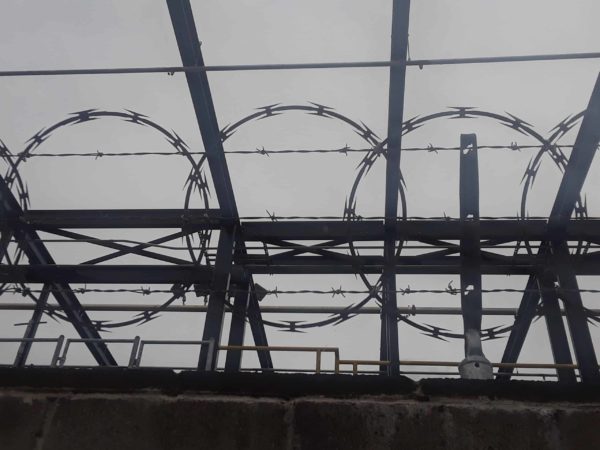The oil is invisible, but the stench is perceptible – a taint in the air as I get out of my Prius to take photos of Zenith Energy’s facility on Front Street.
Here’s what I can’t see: Birds dropping dead over the tar sands extraction zone in Alberta. Indigenous elders and elderly white farmers wasting away from cancer near the Bakken shale oil fields. Workers harassing Native women in restaurants servicing the man camps.
I can’t see the workers in the Zenith “facility” (nice, neutral, all-purpose word) or the toxic product that flows through crisply painted pipes, ready to be loaded onto ships.
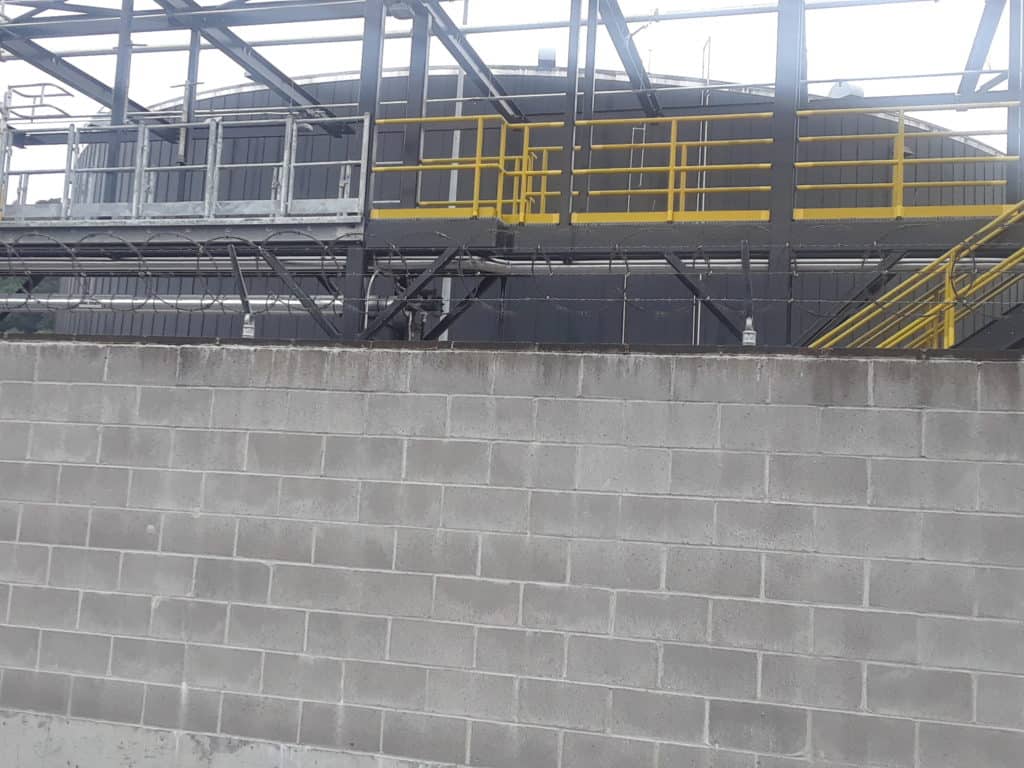
But here’s what I can see:
Locked gates. Tall fences. Barbed wire.
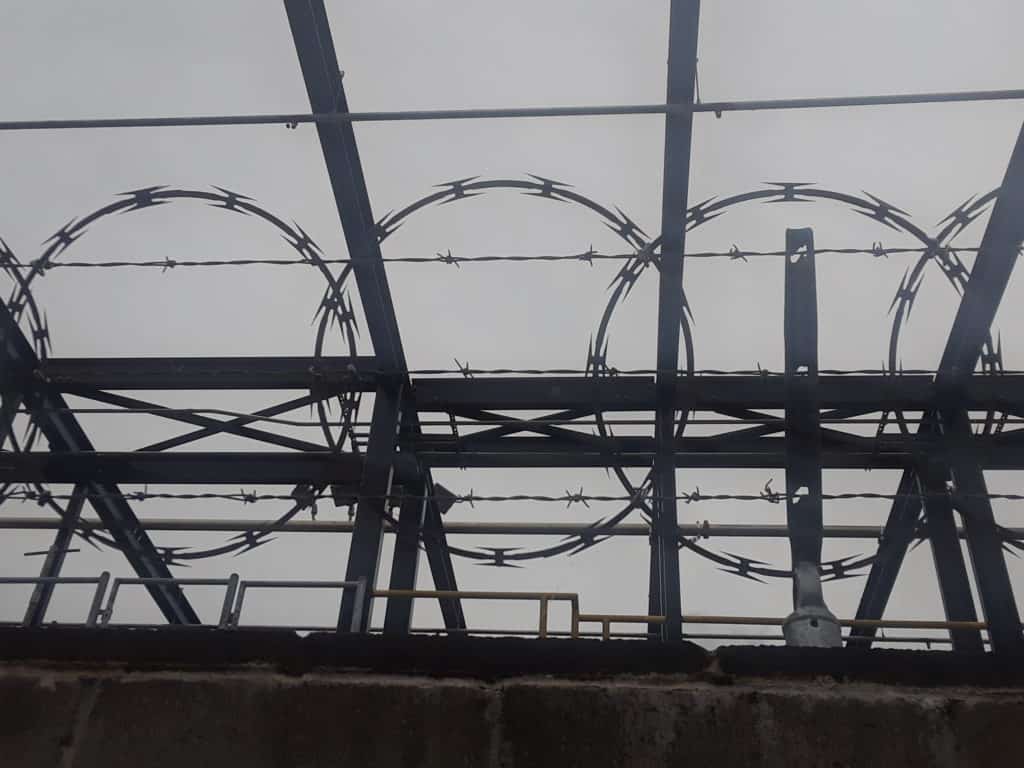
A single fire hydrant, completely inadequate for any fire that might happen – during an earthquake, for example.
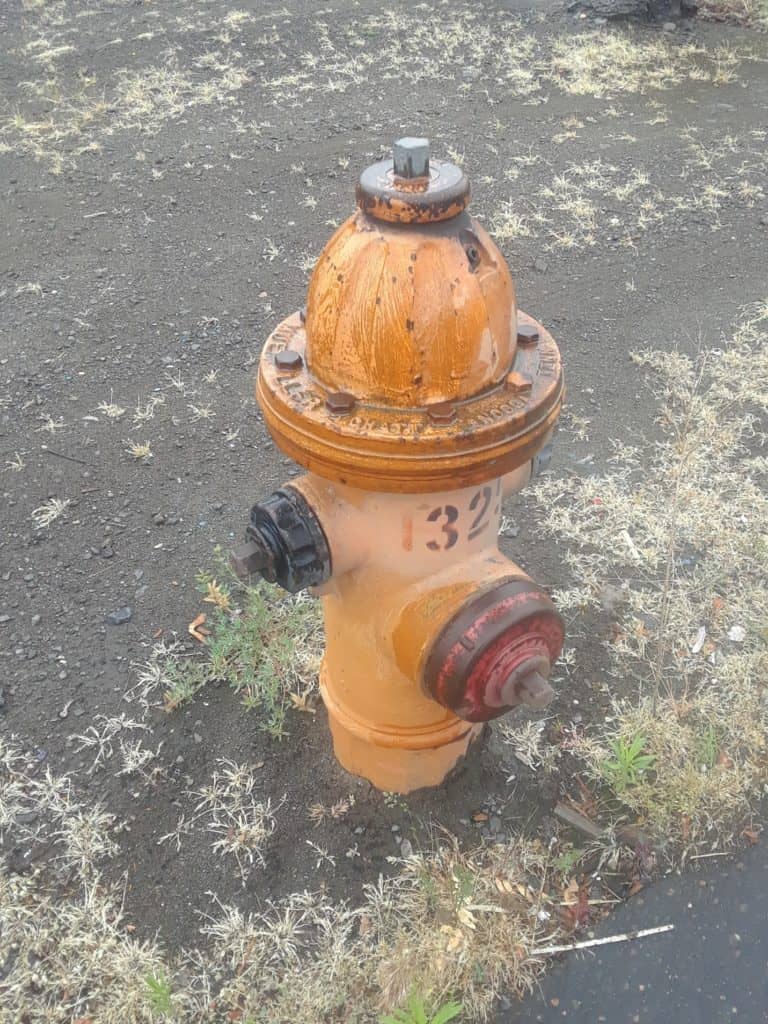
I can also see the wooded slopes of Forest Park, just east of the industrial zone where Zenith’s train tracks stitch the ground and piping structures fill the space above my head. On a cool day in June, the city’s forest looks especially lush, its emerald greens hung with raindrops.
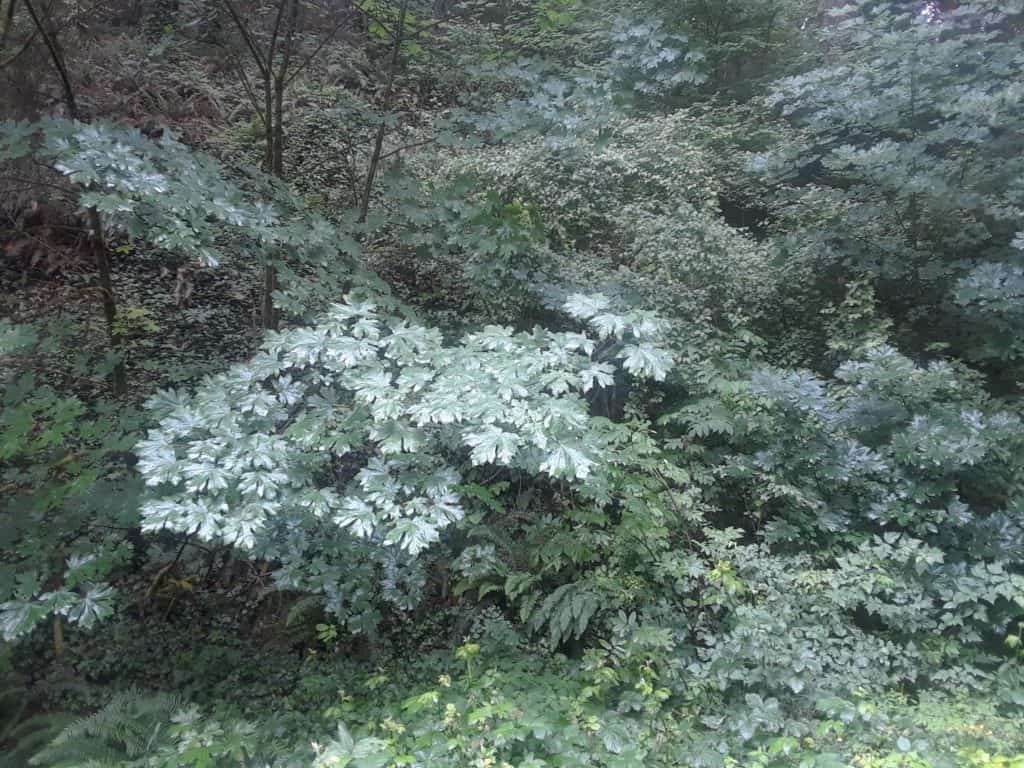
Awareness of risk demands imagination. The “event” hasn’t happened yet, so the mind must conjure the possibilities. The derailment, the blast, the fire, the smoke, the deaths, the persisting devastation. The enormous black billowing clouds, the flashes of bright orange flames. The mind can draw on memories of events: in Lac-Mégantic, Quebec; in Mosier, Oregon.
The mind can ponder the strength of bolts, the quality of the steel in the rails, the resources required to put out an oil fire. But these memories and speculations are disturbing – and people are busy. Too much to deal with already: homeless encampments, shuttered businesses, COVID cases. “It” hasn’t happened yet, and most people don’t want to imagine it happening, even those in city government trained and paid to think about risks to public health and safety.
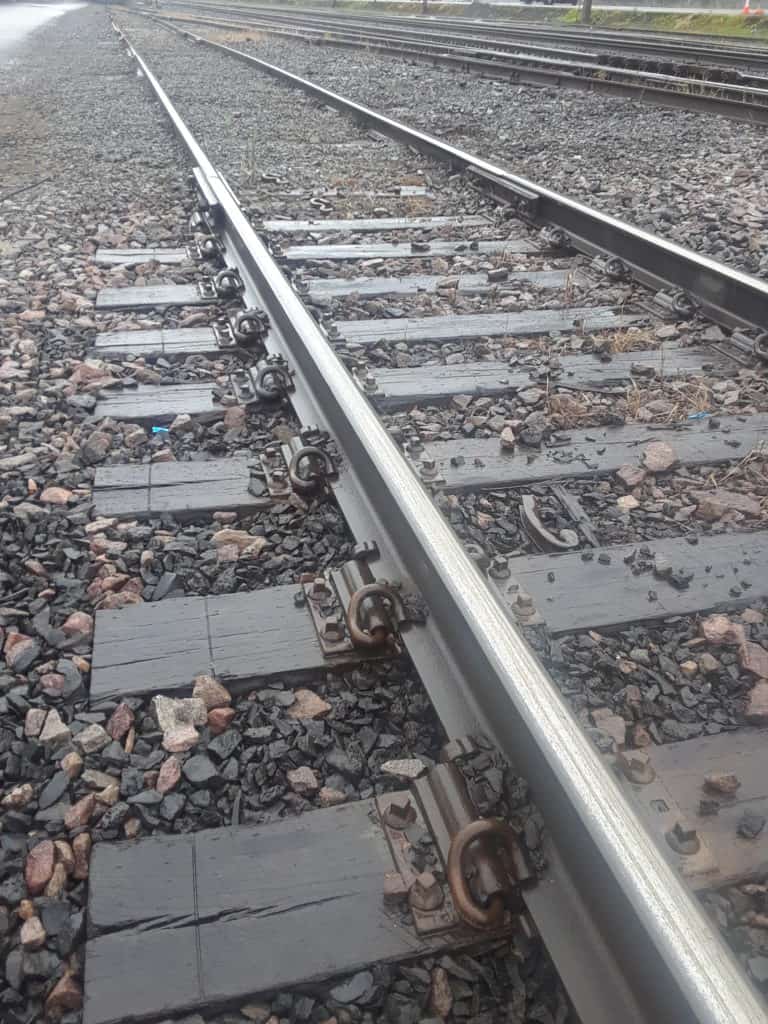
Awareness of others’ risk requires empathy. The people who live near the tracks snaking through North, Northeast and Northwest Portland carry the burden of living in an oil train blast zone. I do not. “The wrong side of the tracks” has long been code for Black, Brown, and/or poor neighborhoods. To live with these threats of future harm is already to be damaged. Who sees this? Who cares?
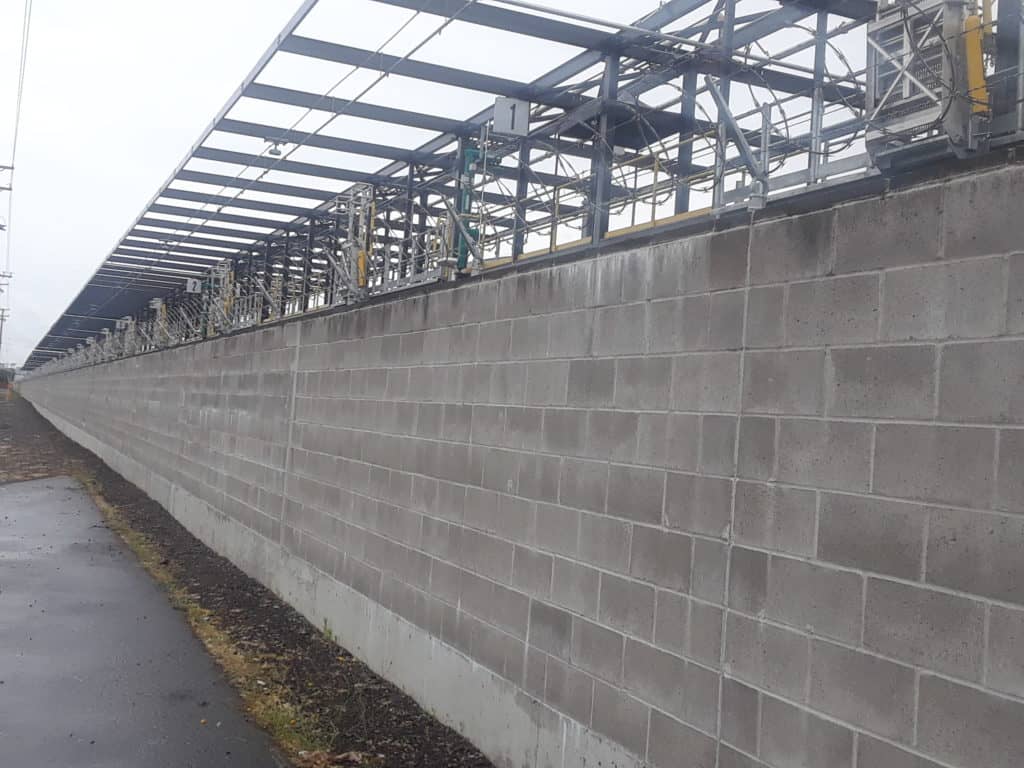
Zenith’s “facility” has long been approved. According to Ken Ray, Public Information Officer of the Bureau of Development Services (BDS), in an email dated June 14th, 2021: “Zenith applied for a permit in 2014, before the Portland City Council adopted new policies prohibiting new fossil fuel infrastructure, for three railcar access platforms. As noted in the second paragraph of that April 16 statement, the Bureau of Development Services was required to consider the permit under city code that was in effect at the time of the permit’s application. As the work that was completed on those platforms met the requirements of Oregon’s commercial building code and passed all inspections, BDS issued a final certificate of occupancy which completed the work on that permit and allows Zenith to use the platforms as constructed.”
So that’s all right then. The tar sands diluted bitumen in Canada, and the shale oil in North Dakota, are extracted and piped onto train cars the trains run across half of North America and west through the scenic Columbia Gorge and inside the city of Portland. The “dilbit” and shale oil are transferred from trains to pipes to ships which take these products to California refineries. Their consumption causes emissions which exacerbate changes to the global climate. Changes to the global climate cause droughts, wildfires, terrifying high temperatures in Oregon. But Zenith can build and “use the platforms as constructed.” Nothing to see here, folks. All compatible with land use in the Rose City.
I take some photos, look around, wonder how to get inside the facility, give up. The uncontainable outgassing will give me a headache if I stay longer. I get in my car and drive away.
The danger is invisible, until it isn’t.
Stop Zenith. Now.
